By Philip Cauchi
Introduction: In the second part of this series we look at a training session example of how to develop the communication channels between the full back, the closest midfielder and the lateral midfielder. This is known as the right or left vertical chain in the team setup.
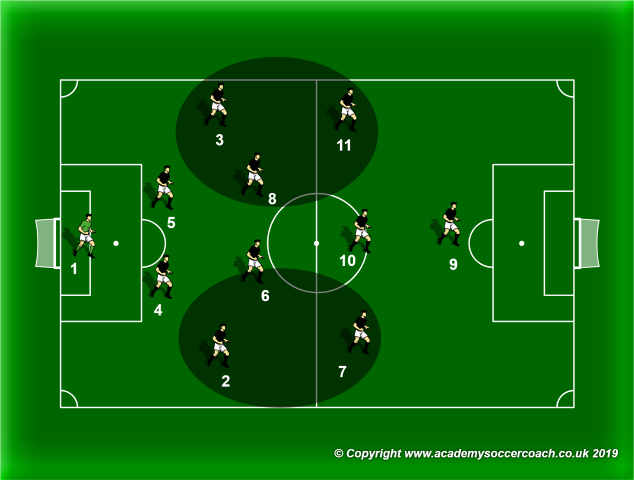
Figure 1 – The communication of the players on the right and left vertical chains.
Below we have some examples we might employ in our team to create and exploit the necessary space in order to increase our chances of scoring.
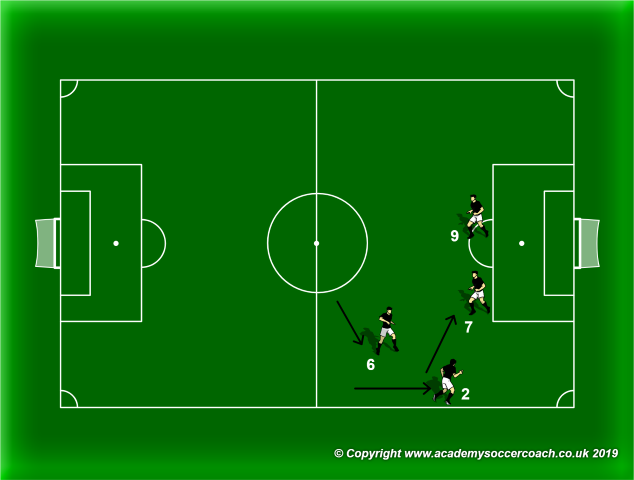
Figure 2 – Lateral midfielder (7) moves inside closer to the striker (9), the full back (2) overlaps while central midfielder (6) covers behind.
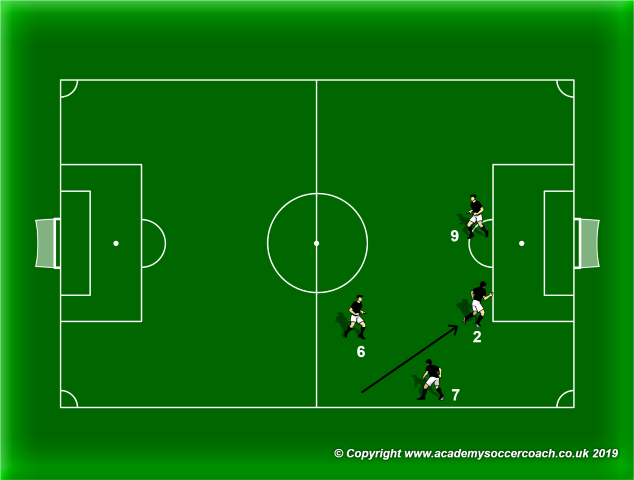
Figure 3 - Lateral midfielder (7) remains wide while full back (2) cuts towards the inside.
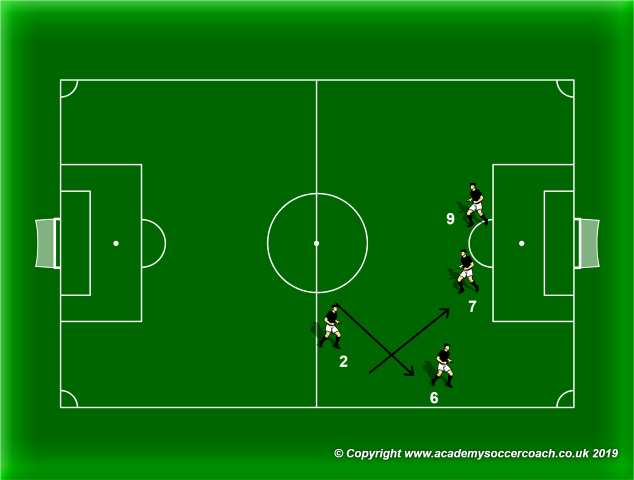
Figure 4 - Lateral midfielder (7) moves towards the inside closer to the striker (9) while the central midfielder (6) moves wide in the outer channel. Full back (2) remains back to support and cover.
Prior to the start of the training session, the key performance outcomes listed on the next page should be explained to the players. This helps the players understand the crucial details that will enable this inter-sector of the team to penetrate the opposition’s defence. The examples shown above might help more in the understanding of such movements if shown to the players using a tactics board. We should remember that by asking the players questions instead of telling them the movements, we are involving them in their own learning process. As such, the players will construct a well-defined representation of the situation after accurately perceiving the inputted stimuli from the environment.
During the course of a match it is the players who will continuously make sense of the ongoing changing circumstances during a match, upon which quick and accurate decisions should be made. These decisions do not apply to the players only as individuals but also collectively. Training patterns of play to develop habits and tactical principles is fine. However, if these habits and principles are not put into action in real match scenarios, then how can we expect the players to apply what they have learned in the global game?
Session No: 2 of 4.
Session title: Developing communication between the full back, lateral midfielder and central midfielder.
Total duration: 86 to 90 minutes.
Moment of play: Team in possession.
Team task: Attack build-up.
Theme: Attack build-up on the flanks.
Main aim: Penetrate the opposition’s defence to create scoring chances.
Key performance outcomes:
1. Staggered angles between the full back, the central midfielder and the lateral midfielder.
2. Timing of movements to open up space.
3. Use of width in attack.
4. Support the ball-carrier.
5. Cover and support behind the ball.
6. Apply immediate pressure on the ball upon losing possession.
7. The opposite flank full back and lateral midfielder should be positioned diagonally to each other and with one of them wider while the other more towards the inside to cover the middle.
P.S. In this session we consider the reality of many of us coaches have in training. This is that sometimes we have only one goalkeeper for a training session. As such all the training activities that follow are described with only one goalkeeper available. If we have two, we just remove the counter gates and position a regular goal with goalkeeper in their place.
Warm-up: 3v2 Line Soccer.
Targeted outcome: 1, 2, 4, 5 and 6.
Duration: 20 minutes.
Players: Groups of four or five players.
Area: 15 yards by 12 yards.
Description: The sessions starts with activation and injury prevention exercises for ten minutes. This is followed by the below illustrated specific warm-up which involves three attackers against two defenders. To score a point the attacking team (blacks) should play a pass into the goal area followed by a dribble across the goal line. The attackers may not remain waiting for the ball inside this zone. If the two defenders win the ball they score by guiding the ball over the opposite line.
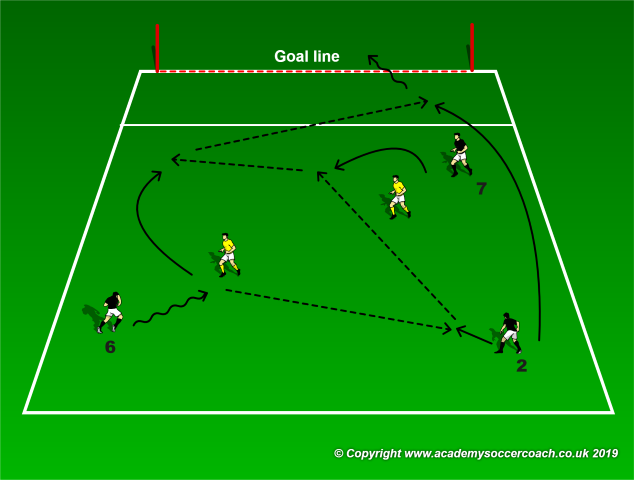
This exercise gets the players in the right frame of mind to move without the ball to open up and exploit space. Focus is on having the three attackers always working at angles with each other. The small area requires quick and accurate ball circulation.
Global situation: 8v8+GK with counter gates.
Targeted outcomes: All.
Duration: 16 minutes – 2 x 7 minutes with two minutes of rest in between.
Players: Attacking team composed of eight players and the defending team composed of eight players plus a goalkeeper.
Area: Half a regular sized soccer pitch (approximately 50 yards by 60 yards).
Description: The black team aims to score in the regular goal defended by the yellow team’s goalkeeper. The yellow team aims to guide the ball through either of the two counter gates shown in the diagram below in order to score a goal.
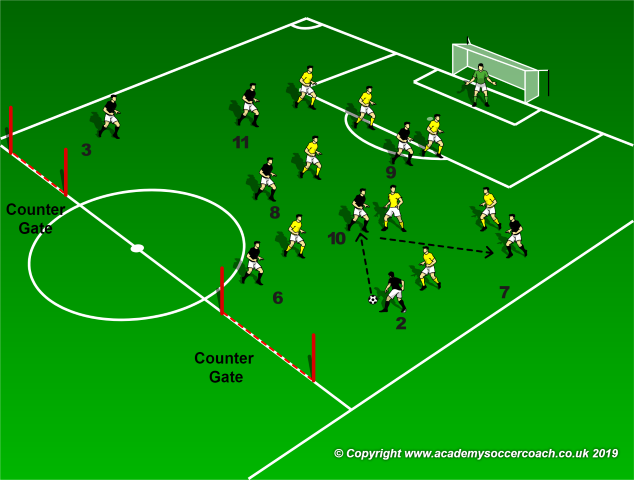
We play a normal soccer game without any restrictions. As coaches we should observe the behaviour of the left and right chains of the team when in possession. Are there any movements and positional rotations in search of creating and exploiting space? Are the players looking to play vertically in search of penetration? This means having support and insertions from deeper positions with the use of underlaps, overlaps, quick one-twos, etc. Are the angles between the players staggered to support and cover each other?
Analytical training situation: 3v3+2 to build-up on the flank.
Targeted outcomes: All.
Duration: 20 minutes – 2 x 9 minutes with two minutes of rest in between.
Players: As in the previous global situation but now we take away one player from each team. Preferably we take a midfielder from each team as we need both full backs, lateral midfielders and striker as a reference point for this training situation.
Area: Half a regular sized soccer pitch. However, we have a marked zone of 20 yards by 15 yards on the flank zone.
Description: We play 3v3+2 neutrals positioned at each end line in the marked zone. The idea of this exercise is to work on the geometrical shape and the communication links between the players of a particular lateral chain – in the below case it is the right chain. As such we impose the condition on the black players to make five sequential passes before they are allowed to play the ball out of the area in order to launch an attack on the yellow team’s goal. After the first nine minutes are over we work on the opposite lateral chain; the left.
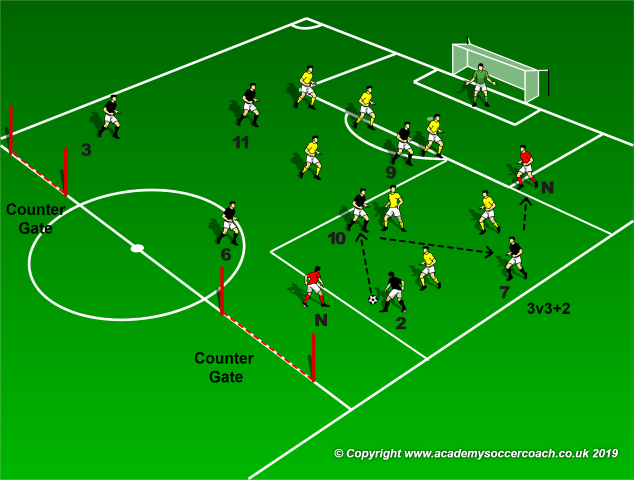
What we look for in this training situation is the angles between the players (black team) and their movements to create the necessary space to play. Positional rotations are deeply encouraged. It is however imperative to have cover behind the line of the ball. This gives our team the opportunity to immediately apply pressure on the ball in cases where possession is lost and to also have support to play the ball back and recycle the attack whenever forward play is not possible.
Global situation: 8v8+GK with counter gates.
Targeted outcomes: All.
Duration: 20 minutes – 2 x 7 minutes with two minutes of rest in between.
Players: Attacking team composed of eight players and the defending team composed of eight players plus a goalkeeper. Attacking team plays in a 2-2-3-1 formation (as part of the 1-4-2-3-1) while the defending team plays in a 1-4-3-1 formation.
Area: Half a regular sized soccer pitch (approximately 50 yards by 60 yards).
Description: Normal match as in the first global situation. Now it is the time to assess whether there has been a positive transfer of learning into the global match. We keep an eye on the movement of the players of the lateral chains when the team is in possession of the ball. Are there positional rotations and off-the-ball movement? Do we have options to play vertically? How can we overload the area around the ball to create multiple possibilities to play it behind the opposition’s defence?
Are we supporting the striker with runs from deeper positions? Do we have cover and support behind the line of the ball? On the weak side of the pitch (i.e. the lateral chain on the opposite side of the ball) are we looking to create width while at the same time establish cover towards the inside? In the below diagram we see that lateral midfielder (11) goes wide and a bit high while full back (3) tucks towards the middle to provide cover and support to central midfielder (6).
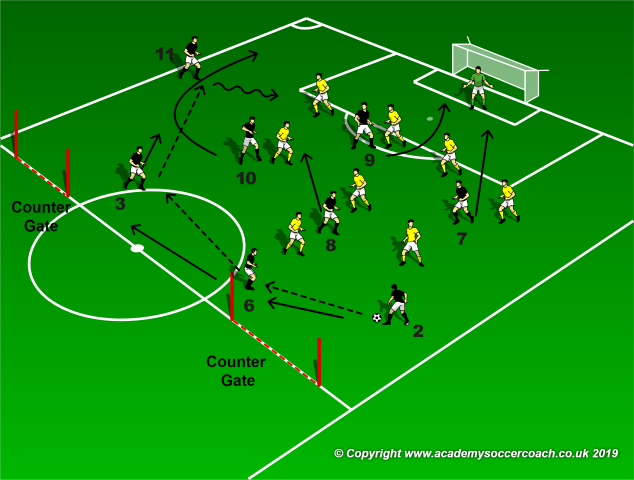
It is worth considering the training situation illustrated above to describe particular movements that might occur on a switch of play by the black team. Notice how when the sequence starts, the central midfielder (6) is in a good supporting position to receive the pass from full back (2). The opposite full back (3) is perfectly positioned towards the inside to receive the ball from 6. Full back (3) passes the ball to lateral midfielder (11) who dribbles towards the inside while at the same time is overlapped by midfielder (10) to provide both width and length in attack. Full back (3) moves forward to support (11) from behind and create a triangular formation with 10 and 11. Full back (3) is also offering cover to the situation.
Central midfielder (6) moves towards the left to further cover and protect the area behind the ball and also offer support to full back (3), in case the latter receives the ball. Full back (2) now moves towards the centre to cover the inner channel. Midfielder (8) moves towards the inside to provide support and also cover for (11), while striker (9) spins off from the opposition’s central defender’s blind side to attack the first post. Lateral midfielder (7) attacks the second post.
Conclusive Part: Three player passing combinations.
Duration: 10 minutes.
Players: Whole team except the goalkeeper who does some basic ball handling as cool down.
Area: 25 yards in length by 25 yards in width.
Description: Player A plays a vertical pass to player C while player B comes short to receive and plays a wall pass with the latter. Player C receives and plays a short pass to player A, who restarts the sequence. Players move one position forward after each pass. Player A moves to position B, player B moves to position C, while player C moves to position A.
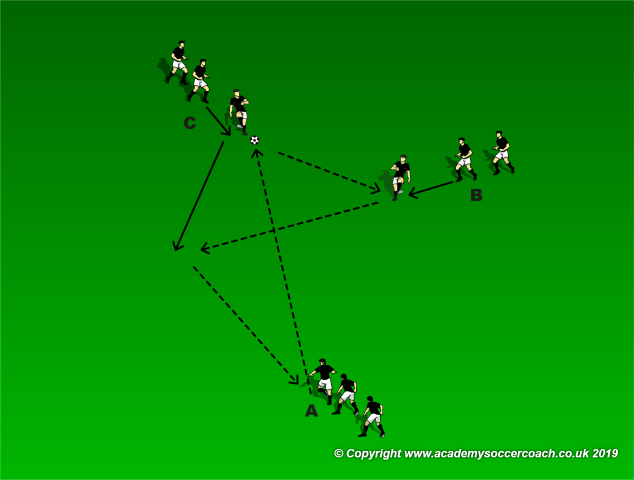
Spend the last five minutes with static stretching exercises each taking approximately twenty seconds in duration. Focus mostly on the adductors, quadriceps, hamstring, and hip flexor muscles.
By Philip Cauchi


